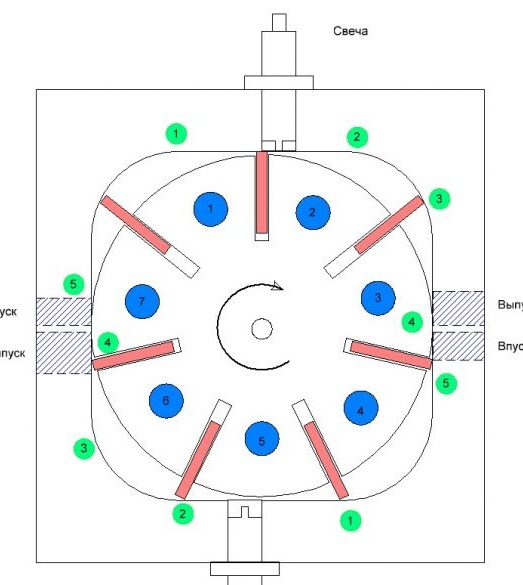New ICE design.
I, I think that this engine can be called rotary because It consists of a stator and a rotor.
As can be seen from the figure on the stator 5 symmetric zones:
1-2 compression zones;
2-3 working areas;
3-4 release zones;
4-5 intake zones.
The rotor in the figure is divided into 7 parts. In each part of the rotor, processes will proceed as in a conventional engine.
In 1 site, the beginning of the compression process of the working mixture or air;
In section 2, the end of the working process, the combustion of the fuel mixture occurred;
In section 3, exhaust gases are released and the working mixture or air is inlet for the diesel version;
At section 4, the intake of the working mixture or air for the diesel version begins;
In section 5, the end of compression of the working mixture and the beginning of the working process occur;
At section 6, the beginning of exhaust gas production begins;
At section 7, the intake of the working mixture or air takes place.
It can be seen from the figure that for one revolution of the rotor in each of its sections two working processes will occur and for the entire engine -14. In the usual 4-stroke internal combustion engine, the full working process takes place over 2 crankshaft revolutions, i.e. the figure corresponds to a 28 cylinder ICE.
Conclusions:
Large torque;
Lower maximum number of revolutions;
Lack of valves and timing;
Good cylinder filling, as the inlet and exhaust tract can be used along the entire length of the engine;
Lack of crankshaft;
Lack of a flywheel.
The possibility of increasing the temperature of the engine, respectively, efficiency.
With best regards, Vladimir.

